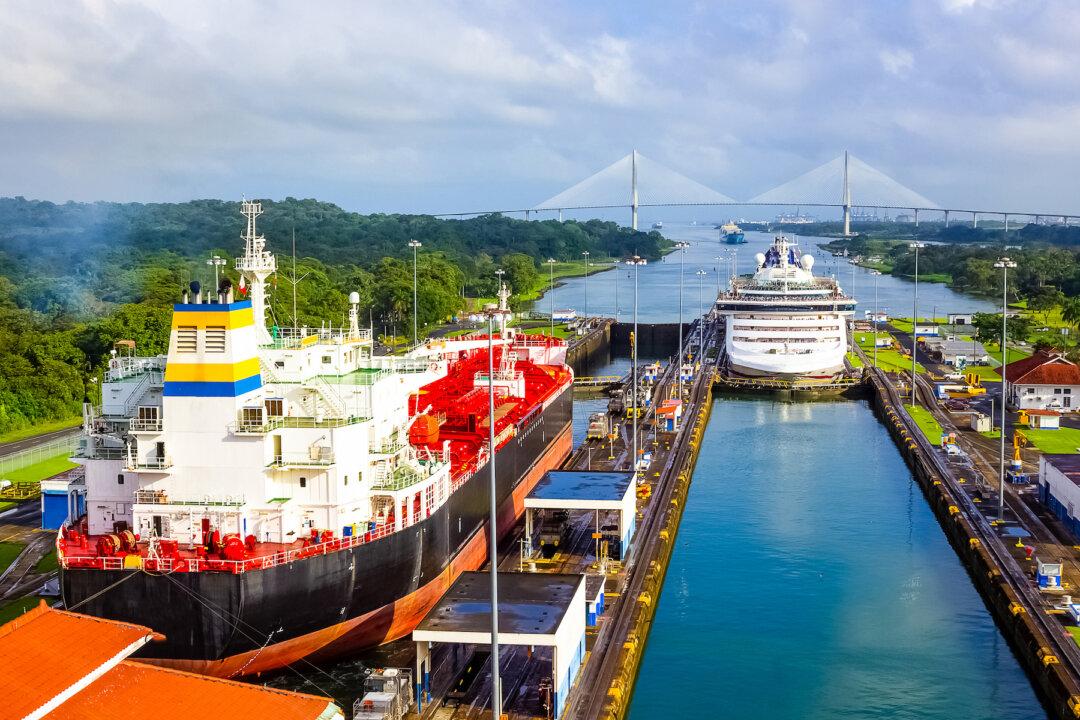From the sky, the first thing you notice is the ships. So many of them. Lined up, as if they’re stalled, bumper to bumper, in a big city’s rush-hour traffic jam. Huge cargo vessels and their multicolored shipping crates, with wares from all over the world, piled up to the height of a high-rise.
On board: hundreds of millions of metric tons of brand-new vehicles and heaps of grains and cereals, along with loads of energy, coal, oil, and much more. The lifeblood of the world, waiting to pass from sea to sea.





